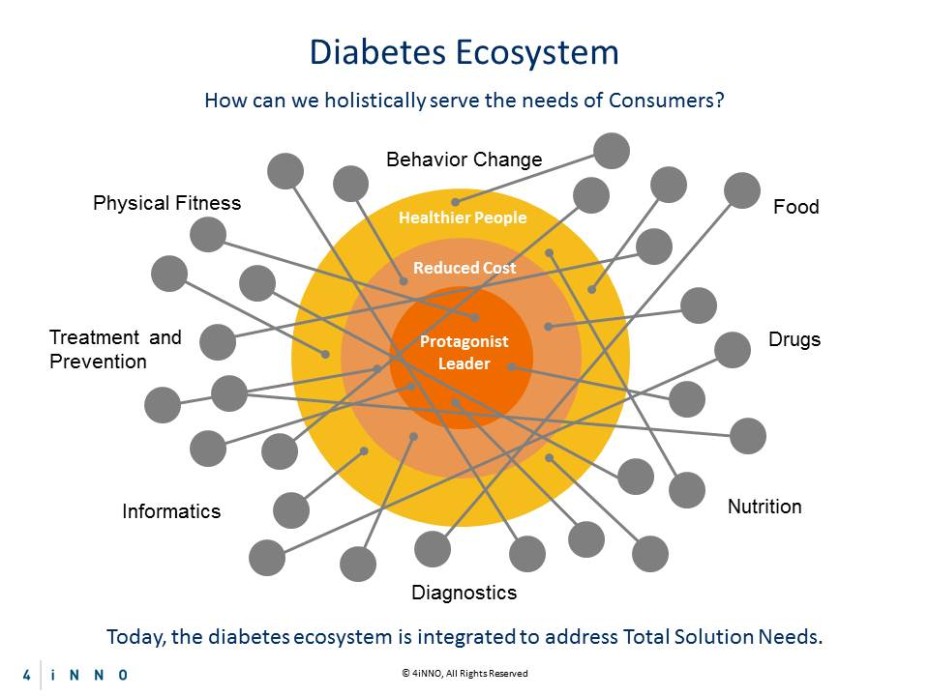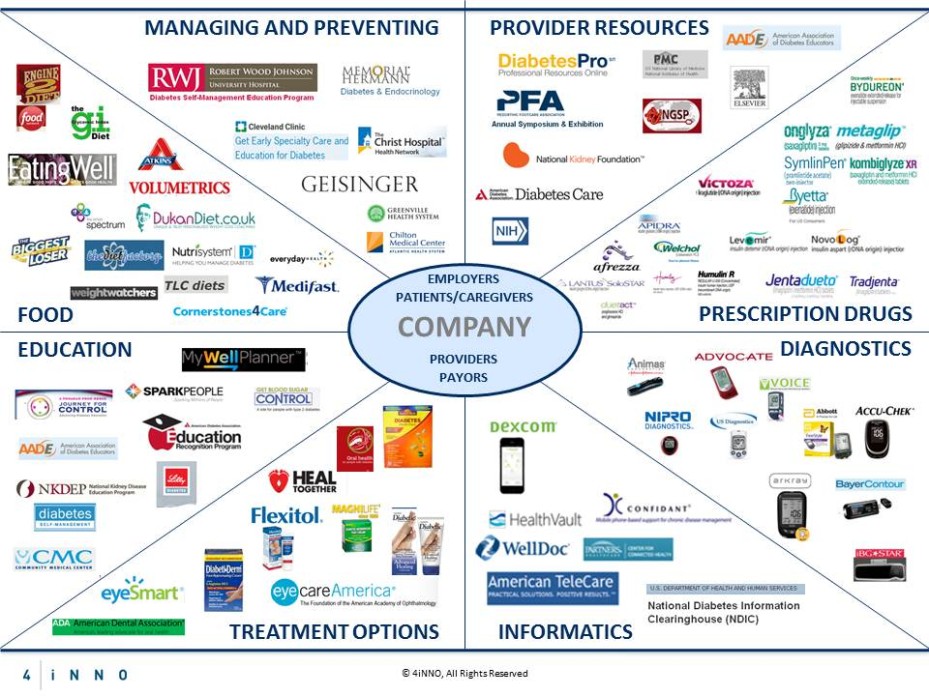
Larry Huston (Managing Director, 4iNNO)
Being diagnosed with a chronic disease can be a frightening, confusing, and, ultimately, isolating experience. In addition to medications and great medical care, patients are looking for knowledge, support, and community to help them manage their diseases successfully. But the pharmaceutical business model is still geared toward selling products to doctors, not considering total solutions for patients. This traditional, linear thinking is one of the fundamental barriers pharmaceutical firms must break through to reach a Level 3 or Total Customer solution, said Larry Huston, founder of 4iNNO, a consulting firm that specializes in developing new business models for pharma clients based on deep understanding of total consumer experiences and how to address the holistic needs of those facing chronic diseases. The successful innovator in pharma must understand both the needs and the cognitive biases of patients (and doctors), then overcome these biases through behavioral economic approaches.
One way to go “beyond the pill” is to become the protagonist for the consumer. Here, Huston defines customer protagonists as a company that becomes the chief proponent of a movement or cause in support of the consumer. For example, Unilever’s Dove brand chose to become the protaganist for the concept of “Real Beauty.” Instead of emphasizing traditional standards for beauty, as defined by runway shows and beauty magazines, Dove celebrated the cause of “inner beauty and self-confidence.”
The approach to building a market was instantly successful, garnering more than 4.5 million unique hits on its website in the first year. It started a dialogue with the target customer segment that grew to include seminars and workshops on inner beauty and self-confidence and created a related “real beauty” industry. The strength of Dove’s strategy is that it did not adopt a cause, but created a cause and became its leading champion. It looked out for the total needs of its target consumers and, in the process, successfully changed its business model.
The first pharmaceutical company to put together such a protagonist approach for a disease area could have just as much success, Huston said. The diabetes arena is ready for a total transformation in an industry that appears to be balking at such a transformation. “The successful company will place themselves at the core of the solution, working with partnering companies to improve the lives of patients.”

Huston drew these conclusions after spending six years trying—with varying degrees of success—to find pharmaceutical and food companies willing to work together to become protagonists for people with diabetes. The goal would be to bring total solutions from a variety of sources and help diabetics better understand and manage their disease. “It’s been very frustrating. No one is stepping into the protagonist’s role in the diabetes therapy area,” Huston said. “Now, people with diabetes see their doctor three times a year, for maybe a 15-minute visit. Many consumers with diabetes know very little about what is going on with their disease.”
4iNNO has collected information from consumers with diabetes and has created in-depth patient and caregiver insight maps. Specifically, patients are asked what they think about their disease, ways in which they experience their disease, what emotions they feel towards their disease, and what tasks they need to do to manage their disease. 4iNNO also mapped doctors’ experiences and discovered significant biases that Doctors bring to treatment.
“Diabetes is not just about insulin. It’s about knowledge, about what food to buy, how much to exercise—treating the core issue of getting the mindset right. Companies need to start looking at ways they can go outside of themselves to become the protagonist for patients with diseases,” Huston said.
There is an opportunity for pharma to be the protagonist that will help bring total solutions to the consumer. In the diabetes solution space there are hundreds of companies that can provide solutions in areas such a drugs, diagnostics, informatics, treatment options, education, food, and care management for the consumer. Someone needs to organize these resources, vet and curate the space, and provide direction and advocacy for patients. To be provocative, Huston asserts that a company like Amazon, Facebook, or Google might eventually step into this role.

Huston’s firm has, however, has seen some success with a total solutions/Level 3 model in the pharma industry. 4iNNO worked with a manufacturer trying to increase the rate of diagnosis of chronic obstructive pulmonary disease (COPD) to not only educate patients, but, as was the case with the Dove strategy, to drive sales of its respiratory drug. “The client came to us with a situation where they had a drug for COPD, but patients weren’t getting diagnosed. We applied behavioral economics, identified cognitive biases, and found significant, well-entrenched biases in Doctors as well. This work led to over 40 new business model approaches on how to overcome the diagnostic challenges.
Choosing the right consumer target and market in which to play is crucial. There must be a large enough target audience to reap significant financial returns. For example, Huston estimates that the 25 million diabetics in the U.S.—most of whom live in economically distressed situations—may not be enough to build a financially viable customer solution. Expanding the segment to include prediabetics, however, creates a large enough base. “You need to pick a target market that is relevant to your core and big enough to sustain a $1 billion business.”
Just as patients need to trust the company that provides their medicine, pharmaceutical companies must establish trust with any partnering companies in developing a total customer solution. “Not only is building a solution like this difficult for pharma companies,” Huston said, “but it is hard to do with multiple partners. Partners can’t be robbing each others’ profits, for instance.”
Given the reluctance Huston has seen within the healthcare industry to use this protagonist business model, he believes this Level 3 solution could come from outside the market. “Amazon could create such a protagonist platform for diabetes patients. They can curate the providers, they have the platform and market access, and they are knowledge-driven and know how to deploy information. You need to look at the entire developmental lifecycle model for these solutions to be successful. Patients with diabetes will trust other patients with diabetes. Patients value information from other patients who have been managing their diabetes with good outcomes,” he said. The key to building your solutions brand is building credibility and trust. Find patient mentors who have been successful with diabetes—that will build credibility and trust in the nascent brand you are creating. Ultimately, your brand should own the story, and bring solutions that make people’s lives better,” Huston said.



